News & Analysis
Role of Science and Technology in Environmental Management in Kenya
Published
2 years agoon
By
Admin
By Dr. Kariuki Muigua, PhD (Leading Environmental Law Scholar, Policy Advisor, Natural Resources Lawyer and Dispute Resolution Expert from Kenya), Winner of Kenya’s ADR Practitioner of the Year 2021, ADR Publication of the Year 2021 and CIArb (Kenya) Lifetime Achievement Award 2021*
Science and technology has been identified as capable of providing effective solutions to most, if not all, environmental problems facing the world. In the context of environmental management, environmental science studies the mechanisms and processes underlying our interactions with the natural environment whereas environmental technology allows application of such knowledge through actions geared towards environmental protection and conservation. Technology not only refers to machines and equipment, but also includes the knowledge, abilities, skills, processes and systems necessary to facilitate environmental conservation and protection. To this extent, technology has been classified as soft technology which entails information, training, research and capacity building and hard technology comprising of equipment.
Science and technology have resulted in many environmental problems but can also be key to addressing environmental concerns such climate change, waste management and environmental degradation. It has been described as a double edged sword capable of both doing and undoing environmental damage. Most environmental challenges such as global warming and climate change can be attributed to technological innovations since they are majorly caused by industrial pollution and fuel emissions from motor vehicles. Addressing these environmental concerns requires the input of science and technology through measures such as reducing greenhouse gases, conserving biological diversity, providing clean energy and expanding the adoption of green technologies for climate change mitigation.
Environmental management and decision making in Kenya is governed by laws, regulations, and policies. Due to the shortcomings of such laws, regulations and policies, there is need for these processes to be informed by scientific evidence. Indeed, science has the ability to remedy the shortcomings of laws and regulations through effective solutions tailor made to specific problems. The outbreak and spread of the Covid-19 pandemic is a clear example. Whereas countries have applied laws such as lock downs, curfews, quarantine and travel restrictions, spread of the virus still continues and the most effective solution to the pandemic would be through scientific knowledge and research to discover a cure and a viable vaccine. In the context of environmental management, there is need to link law and science in order to ensure effective environmental management.
In Kenya, the Constitution obligates the state to recognize the role of science and indigenous technologies in the development of the nation. To this effect, strides have been made towards the use of science and technology in environmental management. The ban on the manufacture, importation, supply, distribution and use of plastic bags and the subsequent adoption of woven bags has helped to curb environmental pollution. However, more needs to be done to integrate the use of science and technology in environmental management in Kenya. Adoption of cleaner technologies in such areas as transport, energy production and food production can be an effective preventive measure. Scientific knowledge is also useful in helping the citizenry adopt healthy lifestyles for a better, cleaner and healthier environment.
Some of the measures that can be adopted towards integrating the use of science and technology in environmental management in Kenya include:
Industrial Waste Treatment
In Kenya, most of the waste discharged from industries is not treated before recycling or disposal. This poses health risks and causes damage to the environment since such waste is often discharged into water sources. Consequently, the industries involved in pollution have found themselves at war with environment entities including the National Environment Management Authority. Some of the measures that have taken by NEMA include closure of industries allegedly engaged in these acts. However, with recent reports of industrial pollution of river sources such as the Nairobi River, questions still linger on the effectiveness of measures adopted in dealing with this challenge. Industrial pollution is a global problem which is not alien to Kenya.
Scientific measures that have been adopted to deal with industrial waste include use of materials such as zeolites, geopolymers, activated carbons and nanomaterials due to their characteristics such as ion exchange capacity, adsorption and photocatalytic action. However, use of science and technology in industrial waste treatment has not been fully appreciated in Kenya. NEMA acknowledges that waste treatment technologies have not been fully embraced in the country which can be attributed to a number of factors such as lack of awareness and knowledge of such technologies; inadequate funding; limited technical competence and slow adoption of modern technological options. There is need for the use of science and technology in industrial waste management in order to enhance environmental management and protection.
Adoption of Green and Clean Technologies
Green technology is an umbrella term that refers to the use of science and technology to create products and processes that are environmentally friendly for sustainable development. Clean technology refers to products or services that improve operational performance while reducing costs, energy consumption, waste or negative effects on the environment. These technologies can be used to protect the environment and in some instances repair damage done in the past. They provide the best ecofriendly option to ensure future sustainability. Such technologies include recycling of waste and use of renewable sources of energy solar, wind and geothermal energy.
Kenya has made some significant strides towards the adoption of green and clean technologies especially in the area of renewable energy. The country has been ranked as the largest producer of renewable energy in Africa with 70% of its electricity generation coming from renewable sources such as geothermal, hydropower, wind and solar sources. The government through the National Environment Management Authority imposed a ban on plastic carrier bags which has led to the use of eco-friendly nonwoven bags. Such measures are to be lauded since they offer significant promise in the country’s endeavour towards green and clean technologies. There is however need for more measures towards this endeavour such as the adoption of agricultural methods and technologies that are eco-friendly as opposed to the polluting and dangerous chemicals.
Climate Change Mitigation
The United Nations Framework Convention on Climate Change (UNFFCC) defines climate change as change of climate which is attributed directly or indirectly to human activities which alter the composition of the global atmosphere and which are in addition to natural climate variability observed over comparable time periods. Climate change has become a global concern in the 21st century and has been a dominant subject in political and scientific discussions. It is majorly caused by human activities that lead to atmospheric concentration of green-house gases such as burning of fossil fuels, deforestation and increase in carbon dioxide levels.
In order to curb this problem, nations under the Paris Agreement have come together under a common cause to undertake ambitious measures aimed at aimed at combating climate change and adapting to its effects. The Agreement is aimed at holding the increase in the global average temperature to well below 2°C above pre-industrial levels and pursuing efforts to limit the temperature increase to 1.5°C above pre-industrial levels in recognition that this would significantly reduce the risks and impacts of climate change. The Agreement recognizes the role of science in climate change mitigation and calls upon states to adopt a country-driven, gender-responsive, participatory and fully transparent approach guided by the best available science and, as appropriate, traditional knowledge, knowledge of indigenous peoples and local knowledge systems.
Kenya like the rest of the world is faced with the threat of climate change. The Kenya National Adaptation Plan acknowledges the role of science, technology and innovations matched to local needs and risks towards climate change mitigation. It proposes thoughtful prioritization of research funding and policy to encourage innovation that will grow Kenya’s knowledge-based economy, building resilience through climate compatible development whilst also encouraging the expansion of technology and expertise exports. The country should be more proactive in adoption of technological and scientific measures aimed at curbing climate change such as the use of clean energy sources.
*This is article is an extract from an article by Dr. Kariuki Muigua, PhD, Kenya’s ADR Practitioner of the Year 2021 (Nairobi Legal Awards), ADR Publisher of the Year 2021 and ADR Lifetime Achievement Award 2021 (CIArb Kenya): Muigua, K., Utilising Science and Technology for Environmental Management in Kenya, http://kmco.co.ke/wp-content/uploads/2020/04/Utilising-Science-and-Technology-for-Environmental-Management-in-Kenya.pdf. Dr. Kariuki Muigua is Kenya’s foremost Environmental Law and Natural Resources Lawyer and Scholar, Sustainable Development Advocate and Conflict Management Expert. Dr. Kariuki Muigua is a Senior Lecturer of Environmental Law and Dispute resolution at the University of Nairobi School of Law and The Center for Advanced Studies in Environmental Law and Policy (CASELAP). He has published numerous books and articles on Environmental Law, Environmental Justice Conflict Management, Alternative Dispute Resolution and Sustainable Development. Dr. Muigua is also a Chartered Arbitrator, an Accredited Mediator, the Africa Trustee of the Chartered Institute of Arbitrators and the Managing Partner of Kariuki Muigua & Co. Advocates. Dr. Muigua is recognized as one of the leading lawyers and dispute resolution experts by the Chambers Global Guide 2021.
References
Ali.M., Model of Green Technology Adaptation in Small and Medium –Sized Tannery Industry, Journal of Engineering and Applied Sciences, 12 (4), 2017.
Huesemann. M.H., ‘Can Pollution Problems Be Effectively Solved by Environmental Science and Technology? An Analysis of Critical Limitations, Ecological Economics, Volume 37, Issue 2, May 2001, pg 271-287.
Human Rights Dimension of Covid-19 Response, available at https://www.hrw.org/news/2020/03/19/ human-rights-dimensions-covid-19-response (accessed on 03/04/2020).
Hsiang Kung. W., The Role of Science in Environmental Protection: Is the Development of Environmental Law Toward More Protective and Productive Way, or Distorted to Inequality, Through the Involvement of Science? Available at: https://papers.ssrn.com/sol3/papers.cfm?abstract_id=1450811 (accessed on 18/03/2020).
Juma. C., ‘Exponential Innovation and Human Rights: Implications for Science and Technology Diplomacy’, Science, Technology and Globalization, February, 2018.
Kamau. J., How Nairobi River Lost Pollution Battle, Daily Nation, Monday, August 19, 2019 65 De Luca. P et al, Industrial Waste Treatment by ETS-10 Ion Exchanger Material, available at https://www.mdpi.com/1996-1944/ 11/11/2316 (accessed on 28/03/2020).
Kenton. W., Green Tech, available at https://www.investopedia.com/terms/g/green_tech.asp (accessed on 29/03/2020).
Kenya News Agency, New Push on Green Technologies, available at https://www.kenyanews.go.ke/new-push-on-green-technologies/, accessed on 29/03/2020.
Ministry of Environment and Forestry, National Climate Change Action Plan 2018-2022, available at http://www.lse.ac.uk/GranthamInstitute/wp-content/uploads/2018/10/8737.pdf (accessed on 31/03/2020).
Moore. J.W et al, Towards Linking Environmental Law and Science, available at https://www.facetsjournal.com/doi/pdf/10.1139/facets-2017-0106 (accessed on 01/04/2020).
Muigua.K., Reconceptualising the Right to a Clean and Healthy Environment in Kenya, available at http://kmco.co.ke/wp-content/uploads/2018/08/RIGHT-TO-CLEAN-AND-HEALTHYENVIRONMENT-IN-KENYA.docx-7th-september-2015.pdf (accessed on 04/04/2020).
Muigua. K., Nurturing Our Environment for Sustainable Development, Glenwood Publishers Limited, 2016 74 United Nations Framework Convention on Climate Change (UNFCC), United Nations, 1992, available at https://unfccc.int/resource/docs/convkp/conveng.pdf (accessed on 30/03/2020).
National Assembly Departmental Committee on Environment and Natural Resources, Report on an Inquiry into Complaints of Environmental Pollution, available at http://www.parliament.go.ke/sites/ default/files/2019-09/LDK%20REPORT_compressed.pdf, accessed on 28/03/2020.
National Environment Management Authority, 2 years on: Say no to plastic bags, available at http://www.nema.go.ke/index.php?option=com_content&view=article&id=296&catid=2&Itemid=451 (Accessed on 20/03/2020).
National Environment Management Authority, ‘The National Solid Waste Management Strategy’, available at http://www.nema.go.ke/images/Docs/Media%20centre/Publication/National%20 Solid%20Waste%20 Management%20Strategy%20.pdf, accessed on 28/03/2020.
National Environment Management Authority (NEMA), Factories Closed, Owners Arrested for Polluting Environment, available at http://www.nema.go.ke/index.php?option=com_content&view=article &id=298: factories-closedowners-arrested-for-polluting-environment&catid=10:news-and-events&Itemid=454 (accessed on 06/04/2020).
National Environment Management Authority (NEMA), Green Initiatives in Kenya, available at http://nema.go.ke/images/Docs/Media%20centre/Brochures/Green%20Economy%20Booklet.pdf (accessed on 29/03/2020).
National Environment Management Authority, Ban on Manufacture, Importation, Supply, Distribution and use of Plastic Carrier Bags in Kenya, available at http://www.nema.go.ke/index.php?option=com _content&view=article&id=296&catid=2&Itemid=451 (accessed on 29/03/2020).
Nichols. M.R., ‘How Technology Can Save the Environment’ available at https://born2invest.com/articles/technology-save-environment/ (accessed on 03/04/2020).
Owusu. P.A., & Asumadu-Sarkodie. S, A Review of Renewable Energy Sources, Sustainability Issues and Climate Change Mitigation, available at https://www.tandfonline.com/doi/pdf/10.1080/23311916. 2016.1167990?needAccess=true (accessed on 30/03/2020).
Srinivas. H., ‘Introduction: Technology and Environment’ available at http://www.gdrc.org/techtran/ introduction.html (accessed on 18/03/2020).
Voulvoulis.N., & Burgman.M.A., The Contrasting Roles of Science and Technology in Environmental Challenges, Critical Reviews in Environmental Science and Technology, Volume 49, 2019, Issue 12.
United Nations Framework Convention on Climate Change, Paris Agreement, 2015, available at http://unfccc.int/files/essential_background/convention/application/pdf/english_paris_agreement.pd f (accessed on 30/03/2020).
You may like
-


The Challenges in Actualizing Sustainable Blue Economy in Kenya
-


The Meaning of Blue Economy in Kenyan Context
-
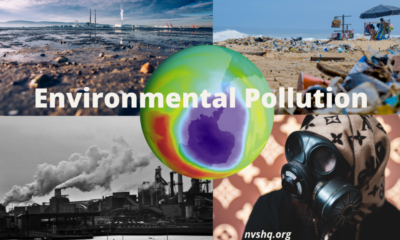

The Meaning of Environmental Pollution in Kenya
-


Overview of Human Right to Clean, Safe and Healthy Environment
-


What Issues are Required for ESG Reporting in Kenya?
-
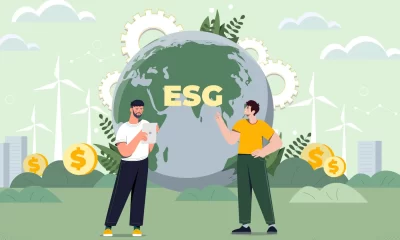

Value Creation as an ESG Management Strategy
News & Analysis
Way Forward in Applying Collaborative Approaches Towards Conflict Management
Published
4 weeks agoon
March 24, 2024By
Admin
By Hon. Prof. Kariuki Muigua, OGW, PhD, C.Arb, FCIArb is a Professor of Environmental Law and Dispute Resolution at the University of Nairobi, Member of Permanent Court of Arbitration, Leading Environmental Law Scholar, Respected Sustainable Development Policy Advisor, Top Natural Resources Lawyer, Highly-Regarded Dispute Resolution Expert and Awardee of the Order of Grand Warrior (OGW) of Kenya by H.E. the President of Republic of Kenya. He is the Academic Champion of ADR 2024, the African ADR Practitioner of the Year 2022, the African Arbitrator of the Year 2022, ADR Practitioner of the Year in Kenya 2021, CIArb (Kenya) Lifetime Achievement Award 2021 and ADR Publisher of the Year 2021 and Author of the Kenya’s First ESG Book: Embracing Environmental Social and Governance (ESG) tenets for Sustainable Development” (Glenwood, Nairobi, July 2023) and Kenya’s First Two Climate Change Law Book: Combating Climate Change for Sustainability (Glenwood, Nairobi, October 2023), Achieving Climate Justice for Development (Glenwood, Nairobi, October 2023), Promoting Rule of Law for Sustainable Development (Glenwood, Nairobi, January 2024) and Actualizing the Right to a Clean and Healthy Environment (Glenwood, Nairobi, March 2024)*
It is necessary to embrace and utilize collaborative approaches in managing conflicts. These techniques include mediation, negotiation, and facilitation. These mechanisms are effective in managing conflicts since they encourage parties to embrace and address disagreements through empathy and listening towards mutually beneficial solutions. Collaborative approaches also have the potential to preserve relationships, build trust, and promote long term positive change. They also ensure a win-win solution is found so that everyone is satisfied which creates the condition for peace and sustainability. These approaches are therefore ideal in managing conflicts. It is therefore important to embrace collaborative approaches in order to ensure effective management of conflicts.
In addition, it is necessary for third parties including mediators and facilitators to develop their skills and techniques in order to enhance the effectiveness of collaborative approaches towards conflict management. For example, it has correctly been observed that mediators and facilitators should listen actively and empathetically in order to assist parties to collaborate towards managing their dispute. Therefore, when a dispute arises, the first step should involve listening to all parties involved with an open mind and without judgment. This should entail active listening, which means paying attention to both verbal and nonverbal cues and acknowledging the emotions and perceptions involved.
It has been observed that by listening empathetically, a third party such as a mediator of facilitator can understand each person’s perspective and start to build a foundation for resolving the conflict through collaboration. In addition, while collaborating towards conflict management, it is necessary to encourage and help parties to focus on interests and not positions. It has been pointed out that focusing positions can result in a standstill which can delay or even defeat the conflict management process. However, by identifying and addressing the underlying interests parties can find common ground and collaborate towards coming up with creative solutions towards their conflict.
Mediators and facilitators should also assist parties to look for areas of agreement or shared goals. Identifying a common ground can build momentum and create a positive environment for resolving the conflict. Further, in order to ensure the effectiveness of collaborative approaches in conflict management, it is necessary to build strong collaboration. It has been asserted that strong collaboration can be achieved by establishing a shared purpose, cultivating trust among parties, encouraging active participation by all parties, and promoting effective communication.
Strong collaboration enables parties to develop trust between and among themselves and strengthen communication channels between the various parties. It also helps to generate inclusive solutions that arise from wider stakeholders’ views. Therefore while applying collaborative approaches, it is necessary for parties to foster strong collaboration by identifying common goals, building trust, ensuring that all stakeholders are involved, and communicating effectively in order to come up with win-win outcomes.
Finally, while embracing collaborative approaches in conflict management, it is necessary for parties to consider seeking help from third parties if need arises. For example, negotiation is always the first point of call whenever a conflict arises whereby parties attempt to manage their conflict without the involvement of third parties. It has been described as the most effective collaborative approach towards conflict management since it starts with an understanding by both parties that they must search for solutions that satisfy everyone.
It enables parties to a dispute to come together to openly discuss the issue causing tension, actively listen to each other, and come up with mutually satisfactory solutions. However, it has been correctly observed that negotiation may fail especially if the conflict is particularly complex or involves multiple parties due to challenges in collaborating. In such circumstances, where negotiation fails, parties should consider resorting to other collaborative approaches such as mediation and facilitation where they attempt to manage the conflict with the help of a third party. A mediator or facilitator can assist parties to collaborate and continue with the negotiations and ultimately break the deadlock.
*This is an extract from Kenya’s First Clean and Healthy Environment Book: Actualizing the Right to a Clean and Healthy Environment (Glenwood, Nairobi, January 2024) by Hon. Prof. Kariuki Muigua, OGW, PhD, Professor of Environmental Law and Dispute Resolution, Senior Advocate of Kenya, Chartered Arbitrator, Kenya’s ADR Practitioner of the Year 2021 (Nairobi Legal Awards), ADR Lifetime Achievement Award 2021 (CIArb Kenya), African Arbitrator of the Year 2022, Africa ADR Practitioner of the Year 2022, Member of National Environment Tribunal (NET) Emeritus (2017 to 2023) and Member of Permanent Court of Arbitration nominated by Republic of Kenya and Academic Champion of ADR 2024. Prof. Kariuki Muigua is a foremost Environmental Law and Natural Resources Lawyer and Scholar, Sustainable Development Advocate and Conflict Management Expert in Kenya. Prof. Kariuki Muigua teaches Environmental Law and Dispute resolution at the University of Nairobi School of Law, The Center for Advanced Studies in Environmental Law and Policy (CASELAP) and Wangari Maathai Institute for Peace and Environmental Studies. He has published numerous books and articles on Environmental Law, Environmental Justice Conflict Management, Alternative Dispute Resolution and Sustainable Development. Prof. Muigua is also a Chartered Arbitrator, an Accredited Mediator, the Managing Partner of Kariuki Muigua & Co. Advocates and Africa Trustee Emeritus of the Chartered Institute of Arbitrators 2019-2022. Prof. Muigua is a 2023 recipient of President of the Republic of Kenya Order of Grand Warrior (OGW) Award for his service to the Nation as a Distinguished Expert, Academic and Scholar in Dispute Resolution and recognized among the top 5 leading lawyers and dispute resolution experts in Band 1 in Kenya by the Chambers Global Guide 2024 and was listed in the Inaugural THE LAWYER AFRICA Litigation Hall of Fame 2023 as one of the Top 50 Most Distinguished Litigation Lawyers in Kenya and the Top Arbitrator in Kenya in 2023.
References
Bercovitch. J., ‘Conflict and Conflict Management in Organizations: A Framework for Analysis.’ Available at https://ocd.lcwu.edu.pk/cfiles/International%20Relations/EC/IR403/Conflict.ConflictManagementinOrga nizations.pdf (Accessed on 01/03/2024).
Bercovitch. J., ‘Mediation Success or Failure: A Search for the Elusive Criteria.’ Cardozo Journal of Conflict Resolution, Vol. 7, p 289.
Bloomfield. D., ‘Towards Complementarity in Conflict Management: Resolution and Settlement in Northern Ireland,’ Journal of Peace Research., Volume 32, Issue 2.
Burrell. B., ‘The Five Conflict Styles’ Available at https://web.mit.edu/collaboration/mainsite/ modules/module1/1.11.5.html (Accessed on 01/03/2024).
Demmers. J., ‘Theories of Violent Conflict: An Introduction’ (Routledge, New York, 2012).
Diana. M., ‘From Conflict to Collaboration’ Available at https://www.pmi.org/learning/library/conflict-collaboration-beyond-projectsuccess-1899 (Accessed on 01/03/2024).
Food and Agriculture Organization., ‘Collaborative Conflict Management for Enhanced National Forest Programmes (NFPs)’ Available at https://www.fao.org/3/i2604e/i2604e00.pdf (Accessed on 01/03/2024).
International Organization for Peace Building., ‘Natural Resources and Conflict: A Path to Mediation.’ Available at https://www.interpeace.org/2015/11/naturalresources-and-conflict-a-path-to-mediation/ (Accessed on 01/03/2024).
Isenhart. M.W., & Spangle. M., ‘Summary of “Collaborative Approaches to Resolving Conflict” ‘ Available at https://www.beyondintractability.org/bksum/isenhart-collaborative (Accessed on 01/03/2024).
Kaushal. R., & Kwantes. C., ‘The Role of Culture and Personality in Choice of Conflict Management Strategy.’ International Journal of Intercultural Relations 30 (2006) 579– 603.
Leeds. C.A., ‘Managing Conflicts across Cultures: Challenges to Practitioners.’ International Journal of Peace Studies, Volume 2, No. 2, 1997.
May. E., ‘Collaborating Conflict Style Explained In 4 Minutes’ Available at https://www.niagara institute.com/blog/collaborating-conflict-style/ (Accessed on 01/03/2024).
Miroslavov. M., ‘Mastering the Collaborating Conflict Style In 2024’ Available at https://www.officernd.com/blog/collaborating-conflictstyle/#:~:text=It’s%20one%20of%20the%20strat egies,their%20underlying%20needs %20and%20interests. (Accessed on 01/03/2024).
Muigua. K & Kariuki. F., ‘ADR, Access to Justice and Development in Kenya.’ Available at http://kmco.co.ke/wp-content/uploads/2018/08/ADR-access-tojustice-and-development-inKenyaRevised-version-of-20.10.14.pdf (Accessed on 01/03/2024).
Muigua. K., ‘Alternative Dispute Resolution and Access to Justice in Kenya.’ Glenwood Publishers Limited, 2015.
Muigua. K., ‘Reframing Conflict Management in the East African Community: Moving from Alternative to ‘Appropriate’ Dispute Resolution.’ Available at https://kmco.co.ke/wpcontent/uploads/2023/06/ Reframing-ConflictManagement-in-the-East-African-CommunityMoving-from-Alternative-toAppropriate-Dispute-Resolution (Accessed on 01/03/2024).
Muigua. K., ‘Resolving Conflicts through Mediation in Kenya.’ Glenwood Publishers Limited, 2nd Edition., 2017.
Quain. S., ‘The Advantages & Disadvantages of Collaborating Conflict Management’ Available at https://smallbusiness.chron.com/advantagesdisadvantages-collaborating-conflict-management-36052.html (Accessed on 01/03/2024).
Samuel. A., ‘Is the Collaborative Style of Conflict Management the Best Approach?’ Available at https://www.linkedin.com/pulse/collaborative-style-conflictmanagement-best-approach-samuel-ansah (Accessed on 01/03/2024).
United Nations., ‘Land and Conflict’ Available at https://www.un.org/en/landnatural-resources-conflict/pdfs/GN_ExeS_Land%20and%20Conflict.pdf (Accessed on 01/03/2024).
Weiss. J., & Hughes. J., ‘Want Collaboration?: Accept—and Actively Manage— Conflict’ Available at https://hbr.org/2005/03/want-collaboration-accept-andactively-manage-conflict (Accessed on 01/03/2024).
News & Analysis
Opportunities and Challenges of Collaborative Conflict Management
Published
4 weeks agoon
March 24, 2024By
Admin
By Hon. Prof. Kariuki Muigua, OGW, PhD, C.Arb, FCIArb is a Professor of Environmental Law and Dispute Resolution at the University of Nairobi, Member of Permanent Court of Arbitration, Leading Environmental Law Scholar, Respected Sustainable Development Policy Advisor, Top Natural Resources Lawyer, Highly-Regarded Dispute Resolution Expert and Awardee of the Order of Grand Warrior (OGW) of Kenya by H.E. the President of Republic of Kenya. He is the Academic Champion of ADR 2024, the African ADR Practitioner of the Year 2022, the African Arbitrator of the Year 2022, ADR Practitioner of the Year in Kenya 2021, CIArb (Kenya) Lifetime Achievement Award 2021 and ADR Publisher of the Year 2021 and Author of the Kenya’s First ESG Book: Embracing Environmental Social and Governance (ESG) tenets for Sustainable Development” (Glenwood, Nairobi, July 2023) and Kenya’s First Two Climate Change Law Book: Combating Climate Change for Sustainability (Glenwood, Nairobi, October 2023), Achieving Climate Justice for Development (Glenwood, Nairobi, October 2023), Promoting Rule of Law for Sustainable Development (Glenwood, Nairobi, January 2024) and Actualizing the Right to a Clean and Healthy Environment (Glenwood, Nairobi, March 2024)*
One of the key collaborative approaches that can be applied in conflict management is mediation. Mediation has been defined as a method of conflict management where conflicting parties gather to seek solutions to the conflict, with the assistance of a third party who facilitates discussions and the flow of information, and thus aiding in the process of reaching an agreement.
Mediation is usually a continuation of the negotiation process since it arises where parties to a conflict have attempted negotiations, but have reached a deadlock. Parties therefore involve a third party known as a mediator to assist them continue with the negotiations and ultimately break the deadlock. A mediator does not have the power to impose a solution upon the parties but rather facilitates communication, promotes understanding, focuses the parties on their interests, and uses creative problem solving to enable the parties to reach their own agreement.
Some of the core values and principles guiding mediation as a collaborative approach towards conflict management include impartiality, empathy, valued reputation, and confidentiality. It has also been pointed out that mediation has certain attributes which include informality, flexibility, efficiency, confidentiality, party autonomy and the ability to promote expeditious and cost effective management of dispute which makes it an ideal mechanism for managing disputes.
Mediation is an effective mechanism that can foster collaboration due to its potential to build peace and bring people together, binding them towards a common goal. Mediation can also foster effective management of conflicts by building consensus and collaboration. It has been argued that mediation can enhance collaboration towards conflict management due to its emphasis on the need for a mediator who listen to the wants, needs, fears, and concerns of all sides. Therefore, for mediation to be effective in fostering collaboration, the approach must be mild and non-confrontational because the goal is to make all parties feel comfortable expressing their views and opinions.
Another key collaborative approach towards conflict management is negotiation. It has been defined as an informal process that involves parties to a conflict meeting to identify and discuss the issues at hand so as to arrive at a mutually acceptable solution without the help of a third party. Negotiation is one of the most fundamental methods of managing conflicts which offers parties maximum control over the process66. It aims at harmonizing the interests of the parties concerned amicably. Negotiation has been described as the process that creates and fuels collaboration.
Negotiation fosters collaboration since it involves all parties sitting down together, talking through the conflict and working towards a solution together. Negotiation has been described as the most effective collaborative approach towards conflict management since it starts with an understanding by both parties that they must search for solutions that satisfy everyone. It enables parties to a dispute to come together to openly discuss the issue causing tension, actively listen to each other, and come up with mutually satisfactory solutions. If negotiation fails, parties may resort to other collaborative approaches such as mediation and facilitation where they attempt to manage the conflict with the help of a third party.
Facilitation is another key collaborative approach towards conflict management. Facilitation entails a third party known as a facilitator who helps parties to a conflict to understand their common objectives and achieve them without while remaining objective in the discussion. A facilitator assists conflicting parties in achieving consensus on any disagreements so that they have a strong basis for future action.
It has been pointed out that facilitation is effective in fostering collaboration in conflict management particularly in conflicts which are complex in nature or those that involve multiple parties. In such conflicts, it is necessary to seek outside help from a neutral third party to facilitate the discussion as parties work towards mutually acceptable outcomes.
Applying collaborative approaches towards conflict management offers several advantages. It has been pointed out that collaborating results in mutually acceptable solutions. Such solutions can therefore be effective and long lasting negating the likelihood of conflicts reemerging in future. Collaborating signifies joint efforts, gain for both parties and integrated solutions arrived at by consensual decisions.
Collaborating is also very effective when it is necessary to build or maintain relationships since it focuses on the needs and interests of all parties in a dispute. It has been observed that collaborative approaches emphasize trust-building, open communication, and empathizing with each other’s perspectives which goes beyond resolving conflicts to facilitate deeper understandings of each other. Collaborative approaches can therefore lead to better interpersonal connections.
Collaborating can also result in constructive decision-making since encouraging active engagement and open dialogue helps others think outside of the box and explore innovative paths towards conflict management. Further, by encouraging the participation and involvement of all stakeholders, collaboration ensures that everyone feels heard, valued and understood which is very essential in managing conflicts.
In addition, collaborating sets the tone for future conflict resolutions since it gives those involved the shared responsibility to resolve their problems. However, collaborative approaches towards conflict management have also been associated with several drawbacks. For example, it has been observed that collaborative approaches may not be easy to implement since they involve a lot of effort to get an actionable solution. It has been observed that thorough discussions, active participation, and exploring multiple perspectives as envisaged by collaborative approaches take time.
Collaborating may therefore require patience and dedication to ensure all voices are heard and meaningful resolutions are reached. Achieving consensus through collaborative approaches can also be difficult since conflicting opinions, varying conflict goals, and emotional variables can make the consensus-building process challenging and time-consuming. As a result of these challenges, it has been asserted that collaborative approaches towards conflict management are frequently the most difficult and time-consuming to achieve.
Further, it has been argued that over use of collaboration and consensual decision-making may reflect risk aversion tendencies or an inclination to defuse responsibility. Despite these challenges, collaborative approaches towards conflict management are ideal in ensuring win-win and long lasting outcomes. It is therefore necessary to embrace and apply collaborative approaches towards conflict management.
*This is an extract from Kenya’s First Clean and Healthy Environment Book: Actualizing the Right to a Clean and Healthy Environment (Glenwood, Nairobi, January 2024) by Hon. Prof. Kariuki Muigua, OGW, PhD, Professor of Environmental Law and Dispute Resolution, Senior Advocate of Kenya, Chartered Arbitrator, Kenya’s ADR Practitioner of the Year 2021 (Nairobi Legal Awards), ADR Lifetime Achievement Award 2021 (CIArb Kenya), African Arbitrator of the Year 2022, Africa ADR Practitioner of the Year 2022, Member of National Environment Tribunal (NET) Emeritus (2017 to 2023) and Member of Permanent Court of Arbitration nominated by Republic of Kenya and Academic Champion of ADR 2024. Prof. Kariuki Muigua is a foremost Environmental Law and Natural Resources Lawyer and Scholar, Sustainable Development Advocate and Conflict Management Expert in Kenya. Prof. Kariuki Muigua teaches Environmental Law and Dispute resolution at the University of Nairobi School of Law, The Center for Advanced Studies in Environmental Law and Policy (CASELAP) and Wangari Maathai Institute for Peace and Environmental Studies. He has published numerous books and articles on Environmental Law, Environmental Justice Conflict Management, Alternative Dispute Resolution and Sustainable Development. Prof. Muigua is also a Chartered Arbitrator, an Accredited Mediator, the Managing Partner of Kariuki Muigua & Co. Advocates and Africa Trustee Emeritus of the Chartered Institute of Arbitrators 2019-2022. Prof. Muigua is a 2023 recipient of President of the Republic of Kenya Order of Grand Warrior (OGW) Award for his service to the Nation as a Distinguished Expert, Academic and Scholar in Dispute Resolution and recognized among the top 5 leading lawyers and dispute resolution experts in Band 1 in Kenya by the Chambers Global Guide 2024 and was listed in the Inaugural THE LAWYER AFRICA Litigation Hall of Fame 2023 as one of the Top 50 Most Distinguished Litigation Lawyers in Kenya and the Top Arbitrator in Kenya in 2023.
References
Bercovitch. J., ‘Conflict and Conflict Management in Organizations: A Framework for Analysis.’ Available at https://ocd.lcwu.edu.pk/cfiles/International%20Relations/EC/IR403/Conflict.ConflictManagementinOrga nizations.pdf (Accessed on 01/03/2024).
Bercovitch. J., ‘Mediation Success or Failure: A Search for the Elusive Criteria.’ Cardozo Journal of Conflict Resolution, Vol. 7, p 289.
Bloomfield. D., ‘Towards Complementarity in Conflict Management: Resolution and Settlement in Northern Ireland,’ Journal of Peace Research., Volume 32, Issue 2.
Burrell. B., ‘The Five Conflict Styles’ Available at https://web.mit.edu/collaboration/mainsite/ modules/module1/1.11.5.html (Accessed on 01/03/2024).
Demmers. J., ‘Theories of Violent Conflict: An Introduction’ (Routledge, New York, 2012).
Diana. M., ‘From Conflict to Collaboration’ Available at https://www.pmi.org/learning/library/conflict-collaboration-beyond-projectsuccess-1899 (Accessed on 01/03/2024).
Food and Agriculture Organization., ‘Collaborative Conflict Management for Enhanced National Forest Programmes (NFPs)’ Available at https://www.fao.org/3/i2604e/i2604e00.pdf (Accessed on 01/03/2024).
International Organization for Peace Building., ‘Natural Resources and Conflict: A Path to Mediation.’ Available at https://www.interpeace.org/2015/11/naturalresources-and-conflict-a-path-to-mediation/ (Accessed on 01/03/2024).
Isenhart. M.W., & Spangle. M., ‘Summary of “Collaborative Approaches to Resolving Conflict” ‘ Available at https://www.beyondintractability.org/bksum/isenhart-collaborative (Accessed on 01/03/2024).
Kaushal. R., & Kwantes. C., ‘The Role of Culture and Personality in Choice of Conflict Management Strategy.’ International Journal of Intercultural Relations 30 (2006) 579– 603.
Leeds. C.A., ‘Managing Conflicts across Cultures: Challenges to Practitioners.’ International Journal of Peace Studies, Volume 2, No. 2, 1997.
May. E., ‘Collaborating Conflict Style Explained In 4 Minutes’ Available at https://www.niagara institute.com/blog/collaborating-conflict-style/ (Accessed on 01/03/2024).
Miroslavov. M., ‘Mastering the Collaborating Conflict Style In 2024’ Available at https://www.officernd.com/blog/collaborating-conflictstyle/#:~:text=It’s%20one%20of%20the%20strat egies,their%20underlying%20needs %20and%20interests. (Accessed on 01/03/2024).
Muigua. K & Kariuki. F., ‘ADR, Access to Justice and Development in Kenya.’ Available at http://kmco.co.ke/wp-content/uploads/2018/08/ADR-access-tojustice-and-development-inKenyaRevised-version-of-20.10.14.pdf (Accessed on 01/03/2024).
Muigua. K., ‘Alternative Dispute Resolution and Access to Justice in Kenya.’ Glenwood Publishers Limited, 2015.
Muigua. K., ‘Reframing Conflict Management in the East African Community: Moving from Alternative to ‘Appropriate’ Dispute Resolution.’ Available at https://kmco.co.ke/wpcontent/uploads/2023/06/ Reframing-ConflictManagement-in-the-East-African-CommunityMoving-from-Alternative-toAppropriate-Dispute-Resolution (Accessed on 01/03/2024).
Muigua. K., ‘Resolving Conflicts through Mediation in Kenya.’ Glenwood Publishers Limited, 2nd Edition., 2017.
Quain. S., ‘The Advantages & Disadvantages of Collaborating Conflict Management’ Available at https://smallbusiness.chron.com/advantagesdisadvantages-collaborating-conflict-management-36052.html (Accessed on 01/03/2024).
Samuel. A., ‘Is the Collaborative Style of Conflict Management the Best Approach?’ Available at https://www.linkedin.com/pulse/collaborative-style-conflictmanagement-best-approach-samuel-ansah (Accessed on 01/03/2024).
United Nations., ‘Land and Conflict’ Available at https://www.un.org/en/landnatural-resources-conflict/pdfs/GN_ExeS_Land%20and%20Conflict.pdf (Accessed on 01/03/2024).
Weiss. J., & Hughes. J., ‘Want Collaboration?: Accept—and Actively Manage— Conflict’ Available at https://hbr.org/2005/03/want-collaboration-accept-andactively-manage-conflict (Accessed on 01/03/2024).
News & Analysis
Collaborative Approaches towards Conflict Management
Published
4 weeks agoon
March 23, 2024By
Admin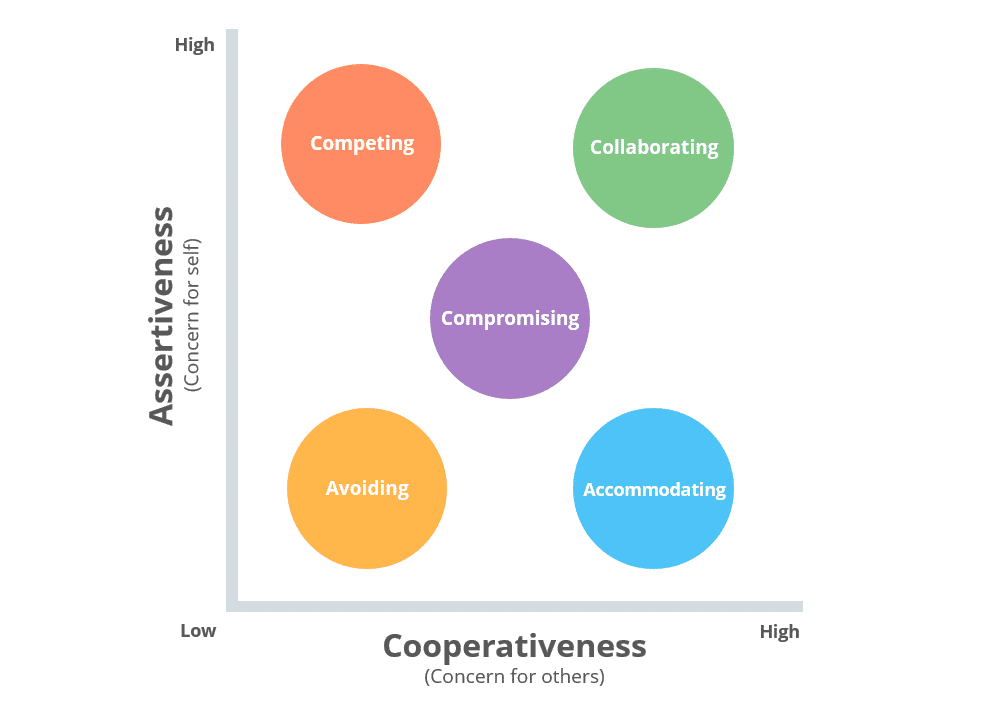
By Hon. Prof. Kariuki Muigua, OGW, PhD, C.Arb, FCIArb is a Professor of Environmental Law and Dispute Resolution at the University of Nairobi, Member of Permanent Court of Arbitration, Leading Environmental Law Scholar, Respected Sustainable Development Policy Advisor, Top Natural Resources Lawyer, Highly-Regarded Dispute Resolution Expert and Awardee of the Order of Grand Warrior (OGW) of Kenya by H.E. the President of Republic of Kenya. He is the Academic Champion of ADR 2024, the African ADR Practitioner of the Year 2022, the African Arbitrator of the Year 2022, ADR Practitioner of the Year in Kenya 2021, CIArb (Kenya) Lifetime Achievement Award 2021 and ADR Publisher of the Year 2021 and Author of the Kenya’s First ESG Book: Embracing Environmental Social and Governance (ESG) tenets for Sustainable Development” (Glenwood, Nairobi, July 2023) and Kenya’s First Two Climate Change Law Book: Combating Climate Change for Sustainability (Glenwood, Nairobi, October 2023), Achieving Climate Justice for Development (Glenwood, Nairobi, October 2023), Promoting Rule of Law for Sustainable Development (Glenwood, Nairobi, January 2024) and Actualizing the Right to a Clean and Healthy Environment (Glenwood, Nairobi, March 2024)*
Conflict management can involve different approaches. These techniques include collaborating, competing, avoiding, accommodating, and compromising. Collaborative approaches towards conflict management have been hailed as the most ideal due to their potential to produce satisfactory and long-term results. Collaborative approaches have been hailed as ensuring efficient and effective management of conflicts towards peace and sustainability.
Collaborative conflict management refers to the use of a wide range of informal approaches where competing or opposing stakeholder groups work together to reach an agreement on a controversial issue. In addition, it has been pointed out that collaborative conflict resolution encourages teams to work through disagreements through empathy, listening, and mutually beneficial solutions. Collaboration, unlike compromise, does not focus on both sides making sacrifices. Instead, in collaborative approaches, both parties come up with mutually beneficial solutions. Collaborating has been identified as a powerful approach to conflict resolution built on cooperation, open communication, and finding win-win outcomes.
It has been argued that among all conflict management techniques, collaborative approaches are the most likely to identify the root cause of a conflict, pinpoint the underlying needs of the parties involved, and come to a win-win outcome for everyone. Through collaboration, all parties to a conflict come together to openly discuss the issue causing tension, actively listen to each other, and work towards a solution that is mutually satisfactory and acceptable to everyone.
It has been pointed out that collaborative conflict management aims to achieve several objectives which include: promoting the participation of diverse or competing stakeholder groups in order to reach agreement on a controversial issue; assisting stakeholders in adopting an attitude that is oriented towards cooperation rather than pursuit of individual interests; establishing new forms of communication and decision making on important issues, and raising awareness of the importance of equity and accountability in stakeholder communication; developing partnerships and strengthening stakeholder networks; creating space for stakeholders to communicate in order to bring about future agreements so that concrete action can be taken; and producing decisions that have a strong base of support.
In addition, it has been observed that collaborative approaches towards conflict management aim to preserve relationships, build trust, and promote long term positive change. Collaborative conflict management is based on certain principles key among them being ensuring open communication, finding common ground, and creating a culture of trust. Collaborative approaches towards conflict management has been hailed as the “win-win” strategy to conflict management. It is an effective means of restoring peace.
Further, it has been argued that collaborative approaches are a better way to conflict management since they encourage freedom of expression, where the conflicting parties express their thoughts and concerns verbally, which makes all parties involved in the dispute feel valued and be aware of each other’s concern. In addition, it has been argued that collaborating sets the tone for future conflict resolution and gives those involved the shared responsibility to manage conflicts prior to escalation.
Managing conflicts in a collaborative way helps to develop trust and strengthen communication channels between the various parties. For example, it has been pointed out that in conflicts related to natural resources, collaborative approaches help in generating inclusive solutions that arise from wider stakeholders’ views, and therefore helps clarify policies, institutions and processes that regulate access to – or control over – natural resources. It has been observed that collaborating entails all parties to a conflict sitting down together, discussing the conflict, and working towards a solution together.
Collaborative approaches towards conflict management have been identified as vital when it is necessary to maintain all parties’ relationships or when the solution itself will have a significant impact on large group of people. In such situations, collaborating ensures a win-win solution is found so that everyone is satisfied which creates the condition for peace and sustainability.
It has been pointed out that for collaborative approaches to be effective, it is necessary for all parties to have collaborating skills such as the ability to use active or effective listening, confront situations in a nonthreatening way, analyze input, and identify underlying concerns. Collaborative approaches towards conflict management are important in fostering effective and long-lasting outcomes. It is therefore necessary to apply collaborative approaches in order to ensure effective and efficient management of conflicts.
*This is an extract from Kenya’s First Clean and Healthy Environment Book: Actualizing the Right to a Clean and Healthy Environment (Glenwood, Nairobi, January 2024) by Hon. Prof. Kariuki Muigua, OGW, PhD, Professor of Environmental Law and Dispute Resolution, Senior Advocate of Kenya, Chartered Arbitrator, Kenya’s ADR Practitioner of the Year 2021 (Nairobi Legal Awards), ADR Lifetime Achievement Award 2021 (CIArb Kenya), African Arbitrator of the Year 2022, Africa ADR Practitioner of the Year 2022, Member of National Environment Tribunal (NET) Emeritus (2017 to 2023) and Member of Permanent Court of Arbitration nominated by Republic of Kenya and Academic Champion of ADR 2024. Prof. Kariuki Muigua is a foremost Environmental Law and Natural Resources Lawyer and Scholar, Sustainable Development Advocate and Conflict Management Expert in Kenya. Prof. Kariuki Muigua teaches Environmental Law and Dispute resolution at the University of Nairobi School of Law, The Center for Advanced Studies in Environmental Law and Policy (CASELAP) and Wangari Maathai Institute for Peace and Environmental Studies. He has published numerous books and articles on Environmental Law, Environmental Justice Conflict Management, Alternative Dispute Resolution and Sustainable Development. Prof. Muigua is also a Chartered Arbitrator, an Accredited Mediator, the Managing Partner of Kariuki Muigua & Co. Advocates and Africa Trustee Emeritus of the Chartered Institute of Arbitrators 2019-2022. Prof. Muigua is a 2023 recipient of President of the Republic of Kenya Order of Grand Warrior (OGW) Award for his service to the Nation as a Distinguished Expert, Academic and Scholar in Dispute Resolution and recognized among the top 5 leading lawyers and dispute resolution experts in Band 1 in Kenya by the Chambers Global Guide 2024 and was listed in the Inaugural THE LAWYER AFRICA Litigation Hall of Fame 2023 as one of the Top 50 Most Distinguished Litigation Lawyers in Kenya and the Top Arbitrator in Kenya in 2023.
References
Bercovitch. J., ‘Conflict and Conflict Management in Organizations: A Framework for Analysis.’ Available at https://ocd.lcwu.edu.pk/cfiles/International%20Relations/EC/IR403/Conflict.ConflictManagementinOrga nizations.pdf (Accessed on 01/03/2024).
Bercovitch. J., ‘Mediation Success or Failure: A Search for the Elusive Criteria.’ Cardozo Journal of Conflict Resolution, Vol. 7, p 289.
Bloomfield. D., ‘Towards Complementarity in Conflict Management: Resolution and Settlement in Northern Ireland,’ Journal of Peace Research., Volume 32, Issue 2.
Burrell. B., ‘The Five Conflict Styles’ Available at https://web.mit.edu/collaboration/mainsite/ modules/module1/1.11.5.html (Accessed on 01/03/2024).
Demmers. J., ‘Theories of Violent Conflict: An Introduction’ (Routledge, New York, 2012).
Diana. M., ‘From Conflict to Collaboration’ Available at https://www.pmi.org/learning/library/conflict-collaboration-beyond-projectsuccess-1899 (Accessed on 01/03/2024).
Food and Agriculture Organization., ‘Collaborative Conflict Management for Enhanced National Forest Programmes (NFPs)’ Available at https://www.fao.org/3/i2604e/i2604e00.pdf (Accessed on 01/03/2024).
International Organization for Peace Building., ‘Natural Resources and Conflict: A Path to Mediation.’ Available at https://www.interpeace.org/2015/11/naturalresources-and-conflict-a-path-to-mediation/ (Accessed on 01/03/2024).
Isenhart. M.W., & Spangle. M., ‘Summary of “Collaborative Approaches to Resolving Conflict” ‘ Available at https://www.beyondintractability.org/bksum/isenhart-collaborative (Accessed on 01/03/2024).
Kaushal. R., & Kwantes. C., ‘The Role of Culture and Personality in Choice of Conflict Management Strategy.’ International Journal of Intercultural Relations 30 (2006) 579– 603.
Leeds. C.A., ‘Managing Conflicts across Cultures: Challenges to Practitioners.’ International Journal of Peace Studies, Volume 2, No. 2, 1997.
May. E., ‘Collaborating Conflict Style Explained In 4 Minutes’ Available at https://www.niagara institute.com/blog/collaborating-conflict-style/ (Accessed on 01/03/2024).
Miroslavov. M., ‘Mastering the Collaborating Conflict Style In 2024’ Available at https://www.officernd.com/blog/collaborating-conflictstyle/#:~:text=It’s%20one%20of%20the%20strat egies,their%20underlying%20needs %20and%20interests. (Accessed on 01/03/2024).
Muigua. K & Kariuki. F., ‘ADR, Access to Justice and Development in Kenya.’ Available at http://kmco.co.ke/wp-content/uploads/2018/08/ADR-access-tojustice-and-development-inKenyaRevised-version-of-20.10.14.pdf (Accessed on 01/03/2024).
Muigua. K., ‘Alternative Dispute Resolution and Access to Justice in Kenya.’ Glenwood Publishers Limited, 2015.
Muigua. K., ‘Reframing Conflict Management in the East African Community: Moving from Alternative to ‘Appropriate’ Dispute Resolution.’ Available at https://kmco.co.ke/wpcontent/uploads/2023/06/ Reframing-ConflictManagement-in-the-East-African-CommunityMoving-from-Alternative-toAppropriate-Dispute-Resolution (Accessed on 01/03/2024).
Muigua. K., ‘Resolving Conflicts through Mediation in Kenya.’ Glenwood Publishers Limited, 2nd Edition., 2017.
Quain. S., ‘The Advantages & Disadvantages of Collaborating Conflict Management’ Available at https://smallbusiness.chron.com/advantagesdisadvantages-collaborating-conflict-management-36052.html (Accessed on 01/03/2024).
Samuel. A., ‘Is the Collaborative Style of Conflict Management the Best Approach?’ Available at https://www.linkedin.com/pulse/collaborative-style-conflictmanagement-best-approach-samuel-ansah (Accessed on 01/03/2024).
United Nations., ‘Land and Conflict’ Available at https://www.un.org/en/landnatural-resources-conflict/pdfs/GN_ExeS_Land%20and%20Conflict.pdf (Accessed on 01/03/2024).
Weiss. J., & Hughes. J., ‘Want Collaboration?: Accept—and Actively Manage— Conflict’ Available at https://hbr.org/2005/03/want-collaboration-accept-andactively-manage-conflict (Accessed on 01/03/2024).

Irene Kiwool: My Track Record and Call to PACT for Better Nairobi LSK

A Toolkit for Customers on accessing Financial Services in Kenya

Way Forward in Applying Collaborative Approaches Towards Conflict Management

Opportunities and Challenges of Collaborative Conflict Management

Collaborative Approaches towards Conflict Management

Way Forward in Fostering the Blue Economy for Sustainability
Trending
-

 Lawyers10 months ago
Lawyers10 months agoTHE LAWYER AFRICA Litigation Hall of Fame | Kenya in 2023
-
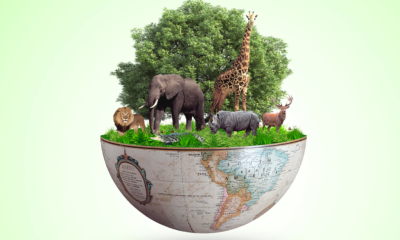
 News & Analysis2 years ago
News & Analysis2 years agoThe Definition and Scope of Biodiversity
-

 News & Analysis2 years ago
News & Analysis2 years agoThe Definition, Aspects and Theories of Development
-
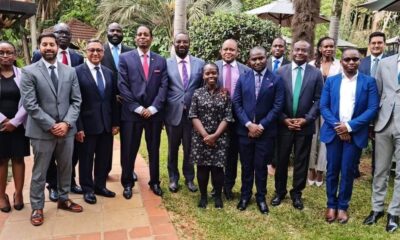
 News & Analysis2 years ago
News & Analysis2 years agoTHE TOP 200 ARBITRATORS IN KENYA 2022
-

 News & Analysis6 months ago
News & Analysis6 months agoThe Role of NEMA in Pollution Control in Kenya
-

 News & Analysis2 years ago
News & Analysis2 years agoRole of Science and Technology in Environmental Management in Kenya
-

 Lawyers10 months ago
Lawyers10 months agoTHE LAWYER AFRICA Top 100 Litigation Lawyers in Kenya 2023
-
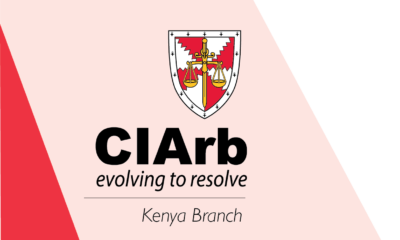
 News & Analysis7 months ago
News & Analysis7 months agoHow to Become an Arbitrator in Kenya

